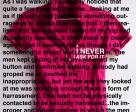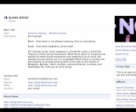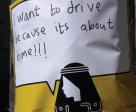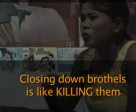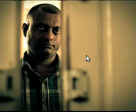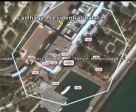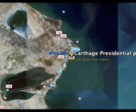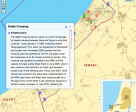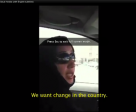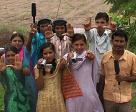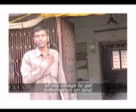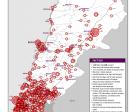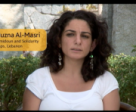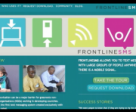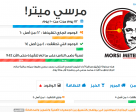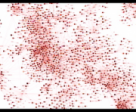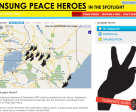videos
flash mobs
open source
database
data
animations
micro blogs
mobile
photo graphs
story telling
maps
blogs
CiviCRM software can be used to manage your relationships. It can send and track responses from bulk emails and be used to help plan events and fundraise. CiviCRM not only organises contacts, but tracks interactions and relationships with people and stores this information on your own web server so you can access it anywhere.
After FarmSubsidy.org began compiling information on farm subsidy funds from Swedish government sources, it had so much data it was difficult to make sense of it. To understand this data and present it in a powerful way, it plotted farm subsidy payments on a Google Map so that people could zoom in to see what money went where to carry out their own investigations and draw their own conclusions.
A team of advocates and technologists from the United States Holocaust Memorial Museum collaborated on a complex 3D map to display the damage to over 3,000 villages in Darfur. The map shows the location of 2.5 million internally displaced persons and refugees and provides open access to numerous photos, videos, and testimonies from the Darfur crisis.
Citizens from Kenya can get information on government funding for development projects by sending a text message to Infonet's budget tracking platform. The questions provide data to help build a picture of which government funds are most under scrutiny in different areas. People can also leave comments on each project to verify, contest, add information, or connect with a local social development group who can help them query the allocation and use of public funds.
To address the growing use of mobile phones in developing countries, Zimbabwean NGO Kubatana created an open source software platform called Freedom Fone to promote the use of interactive voice response (IVR) by community and development oriented organisations. Freedom Fone empowers organisations to generate call-in information-on-demand in any language. It can be used for reaching an offline or illiterate constituency, for conducting simple polls, and much more.
TheyWorkForYou is a website that connects citizens with Members of Parliament in the UK. Following a scandal in 2009 when the government sought to have MPs’ expenses claims kept secret, MySociety mobilised voters to send a few thousand individualised emails to MPs demanding transparency in the use of public funds. Soon after this campaign, the UK government agreed to disclose data on MP expenses.
Using Freedom of Information (FOI) requests Fair Play gathers invoices and other documents that show how the Slovakian government spends its money, adds this material to a database connected to its website, and invites people to use this information to influence political change. By making the information easy to access, a debate was created around public spending and pressure for change became so great that one Slovak construction minister had to resign.
Facts On The Ground is a free mobile phone app to monitor Israeli settlements developed by Americans For Peace Now (APN), a US-based advocacy organisation. It provides details of Israeli settlements using mapping technology. APN had collected a large amount of data that was inaccessible to others and difficult to disseminate until they decided to visualise it through maps. Users of this app can pinpoint individual settlements and the year they were established, access information on the population and add layers of additional information. The accessibility and detailed information available in this app allows people to get a much clearer picture of the situation on the ground.
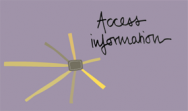
By creating a clear map of Israeli Settlements users were able to learn a significant amount and also contribute information. Using such tools allows for a more transparent and wider understanding of an issue. Including data, maps and apps in your strategy can increase supporter involvement significantly!
The Alternative Asean Network on Burma's (ALTSEAN-Burma) 2010 election watch created a no frills website to provide background information, analysis, and up-to-date information on the 2010 Burma elections in a concise, user-friendly format for activists, media, researchers, diplomats, legislators and policy-makers. The overall aim of the project was to monitor whether the electoral process is conducted in a free and fair manner.
In Mexico, rural subsidies reach billions of dollars and are essential to many farmers' survival. Many of these subsidies, however, have been diverted into hands they were not intended for. Information is difficult to obtain and even more difficult to navigate. The Farm Subsidy Tracking project (Subsidios al Campo) began in 2008 as an effort to build a database on how the subsidies are distributed across the country. The project makes data from 6 national subsidy programmes systematically available online. With over 350,000 searches, the site has become one of the most popular sources of information. It provides an alternative to the government's official narrative, helping analysts and advocates to fight for rural economic policy change in Mexico.
In 2010, a community monitoring project in New Orleans led by activist group Louisiana Bucket Brigade got Gulf Coast residents out on boats and beaches to produce high-resolution aerial imagery of the effects of the BP oil spill. Using cameras mounted on helium balloons they took photos and stitched them together to create an aerial map which was then put in the public domain. The lack of information on the spill, combined with BP's dismal transparency and accountability, meant activists needed to produce their own evidence to support their campaign.
In 2011, Max Schrems used European data privacy laws to file a request for his personal data from Facebook. Facebook provided him with 1,222 pages on a CD, containing deleted chat conversations, details on his physical location identified by IP addresses and more data he never agreed to share. With other students, he set up a campaign website called Europe versus Facebook which provided a video tutorial for others to request their own data from Facebook. This lead to over 40,000 requests to Facebook.
In Lebanon, many urban and public areas have been acquired by dubious means. To challenge popular conceptions of urban spaces and explore the practices of people who use them, the Dictaphone Group turned their research findings on the ownership of the Beirut seafront into an interactive “protest performance” called “This Sea Is Mine". In this site-specific presentation, they took people on a boat trip along a section of the Beirut coastline to explore the nature of its ownership and the laws governing it. During the trip, a fisherman manning the boat told stories of land and building reclamation projects, and their destructive effect on marine life along the coast, and a guide pointed out various coastal resorts’ violations of Lebanese law. Organizers also provided the “audience” with a performance booklet, which was actually a research booklet, including maps, legal texts, descriptions of developmental trajectories of beaches and waterfront spaces, and oral history accounts.
The Targuist Sniper was an advocate who filmed police officers in Morocco repeatedly demanding bribes from motorists and published them on YouTube where they were heavily viewed. As a result the government not only took action against the police officers, but also used the same technique as the Targuist Sniper and installed video cameras to catch police in the future.
After FarmSubsidy.org began compiling information on farm subsidy funds from Swedish government sources, it had so much data it was difficult to make sense of it. To understand this data and present it in a powerful way, it plotted farm subsidy payments on a Google Map so that people could zoom in to see what money went where to carry out their own investigations and draw their own conclusions.
Citizens from Kenya can get information on government funding for development projects by sending a text message to Infonet's budget tracking platform. The questions provide data to help build a picture of which government funds are most under scrutiny in different areas. People can also leave comments on each project to verify, contest, add information, or connect with a local social development group who can help them query the allocation and use of public funds.
Tunisian bloggers collaborated on a mapping project that revealed the presidential plane was being used for extensive personal travel. Their campaign began when a blogger, Astrubal, discovered images of the Tunisian president's plane on websites devoted to tracking air traffic. Using this data, Astrubal combined the plane photos with a visualisation created using Google Earth to show which airports the plane had been seen at and when. The video spread on YouTube, which led to the mainstream media investigating further. As a result, the issue of misuse of public property by government officials received much attention, but as another consequence the Tunisian government blocked YouTube and another video sharing site, DailyMotion.
TheyWorkForYou is a website that connects citizens with Members of Parliament in the UK. Following a scandal in 2009 when the government sought to have MPs’ expenses claims kept secret, MySociety mobilised voters to send a few thousand individualised emails to MPs demanding transparency in the use of public funds. Soon after this campaign, the UK government agreed to disclose data on MP expenses.
Using Freedom of Information (FOI) requests Fair Play gathers invoices and other documents that show how the Slovakian government spends its money, adds this material to a database connected to its website, and invites people to use this information to influence political change. By making the information easy to access, a debate was created around public spending and pressure for change became so great that one Slovak construction minister had to resign.
Wanting to raise public interest around the funding crisis for health in Sub-Saharan Africa and extend their support base to a young audience who would mobilise around this issue, ARASA turned to creative campaign tactics. Inspired by the correlation between excessive government spending on personal luxuries, like birthday parties and flash cars, and the “bling culture” of hip-hop and rap artists, ARASA created a mock music video, “Lords of the Bling”. The video was streamed on the internet, yet many of the local people did not have access to internet, so along with campaign information and props, they brought the film to the community through a local cinema.
In Mexico, rural subsidies reach billions of dollars and are essential to many farmers' survival. Many of these subsidies, however, have been diverted into hands they were not intended for. Information is difficult to obtain and even more difficult to navigate. The Farm Subsidy Tracking project (Subsidios al Campo) began in 2008 as an effort to build a database on how the subsidies are distributed across the country. The project makes data from 6 national subsidy programmes systematically available online. With over 350,000 searches, the site has become one of the most popular sources of information. It provides an alternative to the government's official narrative, helping analysts and advocates to fight for rural economic policy change in Mexico.
In 2010, a community monitoring project in New Orleans led by activist group Louisiana Bucket Brigade got Gulf Coast residents out on boats and beaches to produce high-resolution aerial imagery of the effects of the BP oil spill. Using cameras mounted on helium balloons they took photos and stitched them together to create an aerial map which was then put in the public domain. The lack of information on the spill, combined with BP's dismal transparency and accountability, meant activists needed to produce their own evidence to support their campaign.
In 2009, a group of young people from Kibera, one of Africa's largest slums, found in Nairobi, created the first map of their community. The Map Kibera project worked with 13 local participants to enter data collected using hand-held GPS devices into OpenStreetMap to create a free and open digital map. This map has helped the community to solve and combat various issues: citizens and NGOs have used the data to lobby for resources, negotiate with the police to improve security and better hold government, businesses and anti-poverty projects to account.
In Lebanon, many urban and public areas have been acquired by dubious means. To challenge popular conceptions of urban spaces and explore the practices of people who use them, the Dictaphone Group turned their research findings on the ownership of the Beirut seafront into an interactive “protest performance” called “This Sea Is Mine". In this site-specific presentation, they took people on a boat trip along a section of the Beirut coastline to explore the nature of its ownership and the laws governing it. During the trip, a fisherman manning the boat told stories of land and building reclamation projects, and their destructive effect on marine life along the coast, and a guide pointed out various coastal resorts’ violations of Lebanese law. Organizers also provided the “audience” with a performance booklet, which was actually a research booklet, including maps, legal texts, descriptions of developmental trajectories of beaches and waterfront spaces, and oral history accounts.
In order to encourage people to express themselves publicly and foster government accountability, the Jordanian youth organization Leaders of Tomorrow launched in 2010 the street-based initiative Fadfed (which translates as “let your frustration out”). The activity, held every few months, invites people to openly share their views about sensitive issues, such as drugs, violence, unemployment, inflation and parliamentary elections, on white boards or sheets of paper posted in public places. Organizers live tweet people's opinions using the hashtag #Fadfed to the relevant government officials for responses. Conceived as a way to survey and document public opinion, the initiative collects data that can be used in campaigns or research projects.
This documentary film produced by Witness in partnership with AJEDI-Ka, a DRC-based nonprofit organization, tells the personal stories of child soldiers. After the release of the video, the international criminal court brought charges against those in the Congolese military who had enlisted child soldiers.
Advocates in Burma used blogs to get around the Junta's censorship of news and disseminate information about human rights abuses. Bloggers were able to spread news about two critical events by circulating photos taken with digital and mobile phone cameras: citizen protests against the abrupt end of fuel subsidies, and the resulting increase in military violence against citizens. Burmese images of Buddhist monks and nuns on the streets became very popular online, and helped spread reports about what was happening from Burma to the rest of the world.
Egyptians remixed images of President Mubarak into popular film posters. The images spread quickly on the internet. The humour in the posters took away from Mubarak’s mystique, and allowed people who did not think of themselves as activists to stand up to their President, even in a joking way.
Belarusians created a group of websites they called LuNet, in mock honour of President Alexander Lukasheko’s birthday, after he promised to increase internet censorship. The sites, which were a play on words using sites such as youtube and live journal, were packed with government propaganda amid ironic posts which increased awareness to internet censorship and the detention of bloggers for political purposes.
Citizens of Madagascar sent SMS messages to Foko about reports of violence by the military and police during demonstrations against a takeover of the government. These reports were published on an online map, and a team of local bloggers checked the messages for accuracy. As traditional media was compromised at the time, Foko’s website alerted citizens to trouble spots and gave a richer picture of the crisis than traditional reporting while ensuring an independent information source existed to report on events.
To address the growing use of mobile phones in developing countries, Zimbabwean NGO Kubatana created an open source software platform called Freedom Fone to promote the use of interactive voice response (IVR) by community and development oriented organisations. Freedom Fone empowers organisations to generate call-in information-on-demand in any language. It can be used for reaching an offline or illiterate constituency, for conducting simple polls, and much more.
Journalist, Noha Atef created TortureInEgypt.net in 2006 to document human rights abuses committed by police against Egyptian citizens, using photos and videos submitted by readers. In some cases, the videos are shot by the police themselves. After she drew local media attention to her stories, an innocent man who had been jailed for 14 years was released from prison.
Two short videos showing the death of Neda Agha-Soltan during post-election protests in Iran received worldwide attention in June 2009. The videos were posted and spread so quickly that there was little time to consider the implications of such a rapid spread of unedited, first-hand footage. This proved a critical moment in activism, for thinking about both the ethics of spreading such personal information and the danger that those spreading it can face themselves.
Facts On The Ground is a free mobile phone app to monitor Israeli settlements developed by Americans For Peace Now (APN), a US-based advocacy organisation. It provides details of Israeli settlements using mapping technology. APN had collected a large amount of data that was inaccessible to others and difficult to disseminate until they decided to visualise it through maps. Users of this app can pinpoint individual settlements and the year they were established, access information on the population and add layers of additional information. The accessibility and detailed information available in this app allows people to get a much clearer picture of the situation on the ground.

By creating a clear map of Israeli Settlements users were able to learn a significant amount and also contribute information. Using such tools allows for a more transparent and wider understanding of an issue. Including data, maps and apps in your strategy can increase supporter involvement significantly!
The Alternative Asean Network on Burma's (ALTSEAN-Burma) 2010 election watch created a no frills website to provide background information, analysis, and up-to-date information on the 2010 Burma elections in a concise, user-friendly format for activists, media, researchers, diplomats, legislators and policy-makers. The overall aim of the project was to monitor whether the electoral process is conducted in a free and fair manner.
As the Occupy movement gained ground in 2011, Ivan Cash and Andy Dao invented Occupy George to help communicate the facts about economic inequality in the USA. Inspired by the idea of using banknotes to put messages into circulation, they exploited a loophole in US legislation that permits marking money, as long as it is not entirely defaced. They created simple stamps showing data on wealth distribution and set about stamping dollar bills in California. They invited people to download the template from their website to print the images onto dollar bills at home.
ZA news is a satirical web-tv show that lampoons South Africa's politicians and current affairs. First aired in 2009, its format is a news show made to look and sound like the South African Broadcasting Corporation (SABC). After commissioning the pilot, the SABC refused to air it. It is now shown online reaching 10% of the South African population who have access to internet. ZA News has used its ban from television to highlight the importance of freedom of expression and people's right to consume any media they choose.
Top Goon: Diaries of a Little Dictator is a 13-episode series, broadcast on Youtube, that was created by an anonymous group of actors from within Syria who go by the name of Masasit Mati. With a simple set and finger puppet characters they impersonate Assad, along with generic figures such as “the peaceful protester” and “Shabih”, a member of the state-sponsored militia. Masasit Mati has taken the risk not only of speaking out against the regime but also of blatantly mocking it. In one episode, Assad is portrayed as a contestant in a game of “Who wants to Kill a Million”, where he is up against Hosni Mubarak and Moammar Gadhafi.

While humour is an effective way for activists to undermine institutional power, as well as a means of catharsis for citizens, the risks are enormous in such a turbulent political situation. The internet offers a certain level of anonymity, but it is by no means safe from surveillance. Vigilance with regard to digital security and privacy is crucial.
In February 2011, after watching the late Libyan leader Colonel Muammar Gaddafi give an hour-long speech in an attempt to regain control, Israeli DJ Noy Alooshe acted quickly. Using video software and Auto-Tune, a tool to digitally distort voices, Alooshe spliced snippets of Gaddafi's speech with beats from American rappers T Pain and Pitbull's hit 'Hey Baby'. Within 24 hours he had uploaded the mash-up to YouTube. After just one week, the video had been viewed 2.7 million times.
In order to circumvent internet censorship in China, bloggers have created a lexicon which makes puns out of words and phrases in the Chinese language to talk about forbidden topics. It started with the 'grass-mud horse' – a mythical creature which sounds nearly the same as a dirty insult – as a tool to ridicule the government's blocking of vulgar content online. The grass-mud horse has achieved a personality, making its way into art, poetry and online videos, as well as inspiring an entire vocabulary of words. The Grass-Mud Horse Lexicon gives netizens a way to outsmart the government's sophisticated surveillance technology.
The website Iamjan25.com collects images and videos captured by demonstrators in Tahrir Square, where hundreds of thousands of Egyptians gathered on 25 January 2011 to protest against the regime of then-president Hosni Mubarak. It is a collection of eye-witness accounts recording this significant piece of history from the point of view of the people on the ground. Containing over 7,000 videos and pictures, the website is the largest online archive of its kind.
Most Egyptians get their news from free state television which is in practice a mouthpiece for Egypt's military. The state media unfailingly portray the miltary as great state protectors, and the demonstrators as trouble-seekers spreading unrest. A political party, the Revolutionary Forces Alliance, have been travelling the country using a bed sheet and video projector to publicly screen videos showing police and military brutality. Their campaign, '3askar Kazeboon' (Military Liars), uses visual evidence to present a counter-narrative to the state media's lies.
In 2009, a group of young people from Kibera, one of Africa's largest slums, found in Nairobi, created the first map of their community. The Map Kibera project worked with 13 local participants to enter data collected using hand-held GPS devices into OpenStreetMap to create a free and open digital map. This map has helped the community to solve and combat various issues: citizens and NGOs have used the data to lobby for resources, negotiate with the police to improve security and better hold government, businesses and anti-poverty projects to account.
Sheno Ya3ni (which translates as “What’s that?” or “So what?”) is a group of actors from the Arab Gulf and the Middle East who created a series of online videos to expose and challenge discrimination and corruption in the Kuwaiti society and the political system. Their first five videos, in which they make fun of politicians in public announcements, coincided with the Kuwaiti parliamentary elections in February 2012, reaching on average 40,000 viewers. The group’s YouTube channel now has over 3 million video views.
In response to the Syrian regime's brutal suppression of the revolution, a group of artists are producing political cartoons and comic strips and publishing them anonymously on a Facebook page called Comic4Syria. More than 30 albums have been posted so far, featuring Arabic and translated cartoons and comic strips of the situation in Syria, addressing everything from President Bashar al-Assad's bloody crackdown to the response of the international community. Some comics even illustrate true stories that transpired during the revolution. One of them, Chase, recounts the murder of graffiti artist Nour Hatem Zahra, also known as the Spray Man of Damascus, by a member of the unofficial pro-regime militia, the Shabiha. The cartoons and messages in Comic4Syria are so gripping that they have become a powerful artistic tool supporting the Syrian revolution.
As the Syrian regime continued its brutal suppression of the revolution, while publicly denying such violent actions, anonymous activists launched the Assad Foundation, a spoof website for the Assad family's non-profit organization “that supports the murder of innocent civilians,” according to the website. Using fake ironic pages that put a twist on official messages, the website blatantly mocks and exposes the regime and its supporters. It also includes links to parodic profiles of President Bashar al-Assad, who describes himself in the page as “a vicious war criminal” and “butcher,” and his wife Asma, “the Western-educated, progressive, fashionable, philanthropic, desert rose,” who stands by her man.
To honor people and cities that had a profound effect on the course of the Syrian revolution, anonymous artists created special stamps and published them on Facebook. Stamps of the Syrian Revolution are mock postage “stamps” that feature photos of events ripped from the headlines, or of influential people in the uprising. Sometimes the stamps feature key figures suggested by the fans of the page themselves. With over 400 stamps and counting, the page represents a major visual archive and timeline that documents the revolution as it unfolds, and pays tribute to its supporters.
A team of advocates and technologists from the United States Holocaust Memorial Museum collaborated on a complex 3D map to display the damage to over 3,000 villages in Darfur. The map shows the location of 2.5 million internally displaced persons and refugees and provides open access to numerous photos, videos, and testimonies from the Darfur crisis.
Visualising Palestine (VP) uses public information about life in Israel and Palestine to expose the damaging effects of the occupation. For example, by creating a visualisation based on bus transport networks, VP brings attention to the severe restrictions on mobility that Palestinians experience. An infographic about the physiological changes that occur during fasting and hunger strikes compares and contrasts the hunger strikes by contemporary heroes like Nelson Mandela and Mahatma Gandhi to draw focus to the 66 day strike by Khader Adnan, a Palestinian held by Israel for being detained without official charges. The work of Visualising Palestine presents a new take on a longstanding conflict through the use of a strong evidence-base and new information visualisation tools.
The Targuist Sniper was an advocate who filmed police officers in Morocco repeatedly demanding bribes from motorists and published them on YouTube where they were heavily viewed. As a result the government not only took action against the police officers, but also used the same technique as the Targuist Sniper and installed video cameras to catch police in the future.
Tunisian bloggers collaborated on a mapping project that revealed the presidential plane was being used for extensive personal travel. Their campaign began when a blogger, Astrubal, discovered images of the Tunisian president's plane on websites devoted to tracking air traffic. Using this data, Astrubal combined the plane photos with a visualisation created using Google Earth to show which airports the plane had been seen at and when. The video spread on YouTube, which led to the mainstream media investigating further. As a result, the issue of misuse of public property by government officials received much attention, but as another consequence the Tunisian government blocked YouTube and another video sharing site, DailyMotion.
The Zero Rupee Note Fights Corruption is a campaign tool that Vijay Anand created through his organisation 5th pilar. The Zero Rupee note is a visual aid to mobilise people to say 'no' to corrupt officials and to expose where and when bribes are demanded. Its design is based on the Indian 50 Rupee note, but printed on the note in English and Tamil is the message: “Eliminate Corruption at all levels” and “I promise to neither accept nor give a bribe."
Wanting to raise public interest around the funding crisis for health in Sub-Saharan Africa and extend their support base to a young audience who would mobilise around this issue, ARASA turned to creative campaign tactics. Inspired by the correlation between excessive government spending on personal luxuries, like birthday parties and flash cars, and the “bling culture” of hip-hop and rap artists, ARASA created a mock music video, “Lords of the Bling”. The video was streamed on the internet, yet many of the local people did not have access to internet, so along with campaign information and props, they brought the film to the community through a local cinema.
Advocates in Burma used blogs to get around the Junta's censorship of news and disseminate information about human rights abuses. Bloggers were able to spread news about two critical events by circulating photos taken with digital and mobile phone cameras: citizen protests against the abrupt end of fuel subsidies, and the resulting increase in military violence against citizens. Burmese images of Buddhist monks and nuns on the streets became very popular online, and helped spread reports about what was happening from Burma to the rest of the world.
Egyptians remixed images of President Mubarak into popular film posters. The images spread quickly on the internet. The humour in the posters took away from Mubarak’s mystique, and allowed people who did not think of themselves as activists to stand up to their President, even in a joking way.
Belarusians created a group of websites they called LuNet, in mock honour of President Alexander Lukasheko’s birthday, after he promised to increase internet censorship. The sites, which were a play on words using sites such as youtube and live journal, were packed with government propaganda amid ironic posts which increased awareness to internet censorship and the detention of bloggers for political purposes.
The Alternative Asean Network on Burma's (ALTSEAN-Burma) 2010 election watch created a no frills website to provide background information, analysis, and up-to-date information on the 2010 Burma elections in a concise, user-friendly format for activists, media, researchers, diplomats, legislators and policy-makers. The overall aim of the project was to monitor whether the electoral process is conducted in a free and fair manner.
Top Goon: Diaries of a Little Dictator is a 13-episode series, broadcast on Youtube, that was created by an anonymous group of actors from within Syria who go by the name of Masasit Mati. With a simple set and finger puppet characters they impersonate Assad, along with generic figures such as “the peaceful protester” and “Shabih”, a member of the state-sponsored militia. Masasit Mati has taken the risk not only of speaking out against the regime but also of blatantly mocking it. In one episode, Assad is portrayed as a contestant in a game of “Who wants to Kill a Million”, where he is up against Hosni Mubarak and Moammar Gadhafi.

While humour is an effective way for activists to undermine institutional power, as well as a means of catharsis for citizens, the risks are enormous in such a turbulent political situation. The internet offers a certain level of anonymity, but it is by no means safe from surveillance. Vigilance with regard to digital security and privacy is crucial.
In February 2011, after watching the late Libyan leader Colonel Muammar Gaddafi give an hour-long speech in an attempt to regain control, Israeli DJ Noy Alooshe acted quickly. Using video software and Auto-Tune, a tool to digitally distort voices, Alooshe spliced snippets of Gaddafi's speech with beats from American rappers T Pain and Pitbull's hit 'Hey Baby'. Within 24 hours he had uploaded the mash-up to YouTube. After just one week, the video had been viewed 2.7 million times.
The website Iamjan25.com collects images and videos captured by demonstrators in Tahrir Square, where hundreds of thousands of Egyptians gathered on 25 January 2011 to protest against the regime of then-president Hosni Mubarak. It is a collection of eye-witness accounts recording this significant piece of history from the point of view of the people on the ground. Containing over 7,000 videos and pictures, the website is the largest online archive of its kind.
In early 2012, the Guardian obtained a cache of 3,000 emails that showed the private correspondence of Syria's president Bashar al-Assad and his wife Asma, shedding light on their preoccupations during the Syrian army's siege of Homs and the suppression of the uprising. To provide a clearer understanding of the Assad Family's large email network, the Daily Telegraph used Gephi, an open source tool for network graphs, to visualize the data from the leaked emails. The resulting "social network map" shows the 250 names and email addresses mentioned in the emails and the frequency of their contact with the couple. For example, in the emails, Asma al-Assad appears to spend a lot of time shopping online or arranging for luxury goods to be shipped and delivered from the United Kingdom while the bloody crackdown continues. The map reflects her behavior as a large number of her emails comes from shopping companies.
Sheno Ya3ni (which translates as “What’s that?” or “So what?”) is a group of actors from the Arab Gulf and the Middle East who created a series of online videos to expose and challenge discrimination and corruption in the Kuwaiti society and the political system. Their first five videos, in which they make fun of politicians in public announcements, coincided with the Kuwaiti parliamentary elections in February 2012, reaching on average 40,000 viewers. The group’s YouTube channel now has over 3 million video views.
Non-governmental organizations and independent activists in Lebanon worked for years to defend cultural and artistic freedom of expression. But driven by political, religious or moral motivations, censors have always had their way, banning plays, movies, TV shows and books, or editing out certain content they deemed threatening. To expose the absurdity of Lebanese censors, the SKeyes Center for Media and Cultural Freedom created "Mamnou3" (which means “forbidden” or “prohibited” in Arabic), a mockumentary-style web series about the day-to-day inner workings of Lebanon's censorship bureau. The series caricaturizes censors to make fun of taboos and point out censorship decisions that are rarely clearly justified, but are explained with vague terms such as “threatening state security” and the like. ُThe series quickly spread online and on social networks. The project's YouTube channel now has over 46,000 views.
In March 2011, a throng of men attacked women taking part in a demonstration to celebrate International Women’s Day in Cairo's Tahrir Square, while the police and army just stood by and watched. Later that month, Egyptian troops beat, shocked and strip-searched women arrested during a protest in Cairo and forced them to submit to virginity tests. One year later, a group of young advocates, NooNeswa, launched a female-centered graffiti campaign called “Graffiti 7arimi”, in order to encourage women to reclaim public spaces, and challenge power dynamics. The group stencils images of powerful Egyptian women with remixed quotes inspired from popular culture. In one design, for example, the legendary Oum Kalthoum sings a line from her famous take on Ibrahim Nagi's “The Ruins”: “Give me my freedom, set loose my chains.”
In response to the Syrian regime's brutal suppression of the revolution, a group of artists are producing political cartoons and comic strips and publishing them anonymously on a Facebook page called Comic4Syria. More than 30 albums have been posted so far, featuring Arabic and translated cartoons and comic strips of the situation in Syria, addressing everything from President Bashar al-Assad's bloody crackdown to the response of the international community. Some comics even illustrate true stories that transpired during the revolution. One of them, Chase, recounts the murder of graffiti artist Nour Hatem Zahra, also known as the Spray Man of Damascus, by a member of the unofficial pro-regime militia, the Shabiha. The cartoons and messages in Comic4Syria are so gripping that they have become a powerful artistic tool supporting the Syrian revolution.
In order to encourage people to express themselves publicly and foster government accountability, the Jordanian youth organization Leaders of Tomorrow launched in 2010 the street-based initiative Fadfed (which translates as “let your frustration out”). The activity, held every few months, invites people to openly share their views about sensitive issues, such as drugs, violence, unemployment, inflation and parliamentary elections, on white boards or sheets of paper posted in public places. Organizers live tweet people's opinions using the hashtag #Fadfed to the relevant government officials for responses. Conceived as a way to survey and document public opinion, the initiative collects data that can be used in campaigns or research projects.
To inspire people to organise climate change actions around the world, 350.org created an animated video about climate change to get their message across. The video does not use any words so it can be understood by speakers of all languages and uses the number 350, which refers to the number scientists say is the safe limit of carbon dioxide in the atmosphere. The animation was published on 350.org, as well as Youtube and Facebook to reach out to as many people as possible.
Kleercut was a campaign implemented by Greenpeace to end the use of virgin wood fibre in Kimberly-Clark products. CiviCRM software was used to collect contact information from people who visited the Kleercut website and send them email alerts to take further action, such as sending targeted emails to Kimberly-Clark shareholders or to take part in direct action near them. In August 2009, the Kleercut campaign was successful. Kimberlin-Clark agreed to introduce standards for fibre content in its products.
An Italian software collective, Molleindustria, in collaboration with American culture jamming activists The Yes Men, produced Phone Story, a “radical game” for smart phones. The game exposes the human and environmental costs of the mobile phone industry. It made headlines when Apple banned it from its iPhone App Store. This only bolstered Molleindustria's campaign. It was then released on Google's Android market where it is among the most highly-rated apps.
In 2010 Chevron, the second largest oil company in the world, prepared to release a campaign called "We Agree" which featured messages from people explaining what they think the oil company should do supposedly guiding the company's decision making. Hours before this was due to launch, activists published a press release from a spoof Chevron domain, launching a fake “We Agree” site. The fake site featured four “improved” advertisements. The stunt led by Rain Forest Action Network, Amazon Watch and the Yes Men, simultaneously made Chevron look stupid, while also presenting evidence to counter their 'greenwashing' strategy.
In 2010, a community monitoring project in New Orleans led by activist group Louisiana Bucket Brigade got Gulf Coast residents out on boats and beaches to produce high-resolution aerial imagery of the effects of the BP oil spill. Using cameras mounted on helium balloons they took photos and stitched them together to create an aerial map which was then put in the public domain. The lack of information on the spill, combined with BP's dismal transparency and accountability, meant activists needed to produce their own evidence to support their campaign.
In Lebanon, many urban and public areas have been acquired by dubious means. To challenge popular conceptions of urban spaces and explore the practices of people who use them, the Dictaphone Group turned their research findings on the ownership of the Beirut seafront into an interactive “protest performance” called “This Sea Is Mine". In this site-specific presentation, they took people on a boat trip along a section of the Beirut coastline to explore the nature of its ownership and the laws governing it. During the trip, a fisherman manning the boat told stories of land and building reclamation projects, and their destructive effect on marine life along the coast, and a guide pointed out various coastal resorts’ violations of Lebanese law. Organizers also provided the “audience” with a performance booklet, which was actually a research booklet, including maps, legal texts, descriptions of developmental trajectories of beaches and waterfront spaces, and oral history accounts.
In Lebanon, an LGBT advocacy organisation (not to be named here for privacy reasons) created a Facebook profile with no photo and no friends to safely mobilise people who needed support and/or wanted to advocate for LGBT rights. The profile served as a way to direct people to the organisation's website without threatening peoples security or anonymity by publicly linking them with an LGBT organisation.
The Pink Chaddi Campaign from India was a response to a right wing group's attacks on women drinking in pubs. By organising through Facebook and their blogs, women’s advocates asked supporters to send pink chaddis (panties) to members of this group.
Artists and advocates from Egypt created a short animated video based on traditional Arabic stories re-told from a feminist perspective. The video uses animals and objects to approach gender inequality in a creative way that is also sensitive to its audience. It was created by Tessa Lewin and the Women and Memory Forum, Egypt.
Blank Noise explores the issue of sexual harassment of women by combining personal storytelling with public actions. Women tell their stories by sending garments that they wore when harassed, blog together during a ‘blogathon’ about what happened to them, post photographs of places where they were harassed, and tell stories of how they reacted to street harassment.
The project, Digital Stories for Transformation, documents stories rarely told, and rarely heard. Women share their personal experiences of surviving violence through digital storytelling. The approach allows people to use animation, photos, music, and live video to tell first-person stories. These are then distributed to human rights advocates, policy-makers, and service and aid workers.
Sex workers responded to laws that discriminated against them by producing satirical karaoke videos using prominent political figures as characters. By screening these videos at bars, clubs, and parties, sex workers educated each other in their own workplaces. The videos were also shown at advocacy meetings and conferences to expose policy-makers to sex worker communities and issues.
To draw attention to laws banning women from driving cars in Saudi Arabia, Areej Khan, a Saudi artist and graphic designer living in the US, created the 'We the Women' campaign. The project got women to respond to the question, "To drive or not drive?" by writing their answers on stickers that they could post in public spaces. Participants also photographed their stickers and added them to the campaign's Flickr photo group and Facebook page.
The Asia Pacific Network of Sex Workers (APNSW) used digital video to document abusive conditions and human rights violations reported by sex workers detained in so-called ‘rehabilitation’ centres in Cambodia. Sex workers interviewed after their release and escape told personal stories of assault, rape, and denial of access to clean food, water, and medicine. They posted this video on YouTube and blip.tv, and presented it at a day of action for 500 sex workers in Phnom Penh. As a result one of the combined efforts of APNSW, WNU, and local human rights groups working together to provide evidence of the abuses that took place, one of the two centres was closed.
Mapping Harrassment on the Streets of Cairo is a movement which uses a mashup, Ushahidi, to provide a place for women and other victims of sexual harassment to report instances of harassment on the streets of Cairo. Using a number of methods to gather the information, people can submit reports via SMS, email and a web form. The reports are then put onto a online map, making the entire system act as an advocacy, prevention, and response tool, highlighting the severity and pervasiveness of the problem.
A group of Spanish activists who organised a kissing ‘flashmob’ through Facebook to coincide with the Pope's visit to Barcelona received worldwide press coverage. The demonstration was in response to the Pope’s disapproval of Spain’s tolerance towards gay marriage, divorce and abortion. The group’s Facebook page read "No placards, no flags, no shouting and no slogans. Only kissing allowed." Although the turnout was relatively small, the originality of the idea attracted news coverage acoss five continents.
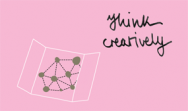
A flashmob is a creative, fun and low-resource way to mobilise a critical mass of people. But you'll need to make it appeal to your supporters. It's a good idea to start by looking at other actions that inspire you. Included in this card is a suggested activity to do this with your colleagues.
The Bell Bajao Campaign was conceived by Mumbai-based NGO, Breakthrough, to mobilise men to take a stand against domestic violence. A series of public service announcements were brodcast on Indian radio, television and print showing men and boys who have witnessed domestic violence and intervened. “Bell Bajao” translates as “ring the bell” referring to the idea that anyone can help stop domestic violence by being proactive and drawing attention to it. The campaign had a wide reach and included men in a positive way on an issue in which they are usually negatively portrayed.
In March 2011, a throng of men attacked women taking part in a demonstration to celebrate International Women’s Day in Cairo's Tahrir Square, while the police and army just stood by and watched. Later that month, Egyptian troops beat, shocked and strip-searched women arrested during a protest in Cairo and forced them to submit to virginity tests. One year later, a group of young advocates, NooNeswa, launched a female-centered graffiti campaign called “Graffiti 7arimi”, in order to encourage women to reclaim public spaces, and challenge power dynamics. The group stencils images of powerful Egyptian women with remixed quotes inspired from popular culture. In one design, for example, the legendary Oum Kalthoum sings a line from her famous take on Ibrahim Nagi's “The Ruins”: “Give me my freedom, set loose my chains.”
Advocates in Burma used blogs to get around the Junta's censorship of news and disseminate information about human rights abuses. Bloggers were able to spread news about two critical events by circulating photos taken with digital and mobile phone cameras: citizen protests against the abrupt end of fuel subsidies, and the resulting increase in military violence against citizens. Burmese images of Buddhist monks and nuns on the streets became very popular online, and helped spread reports about what was happening from Burma to the rest of the world.
After the Tunisian government blocked video sharing websites advocates responded by making an interactive Google Earth mashup - plotting human rights videos on a 3D map in the same location as the Presidential Palace. This also allowed people to still see the videos even though direct access to YouTube had been denied. Advocates used a combination of video, animation, and storytelling.
This documentary film produced by Witness in partnership with AJEDI-Ka, a DRC-based nonprofit organization, tells the personal stories of child soldiers. After the release of the video, the international criminal court brought charges against those in the Congolese military who had enlisted child soldiers.
Sex workers responded to laws that discriminated against them by producing satirical karaoke videos using prominent political figures as characters. By screening these videos at bars, clubs, and parties, sex workers educated each other in their own workplaces. The videos were also shown at advocacy meetings and conferences to expose policy-makers to sex worker communities and issues.
A team of advocates and technologists from the United States Holocaust Memorial Museum collaborated on a complex 3D map to display the damage to over 3,000 villages in Darfur. The map shows the location of 2.5 million internally displaced persons and refugees and provides open access to numerous photos, videos, and testimonies from the Darfur crisis.
Journalist, Noha Atef created TortureInEgypt.net in 2006 to document human rights abuses committed by police against Egyptian citizens, using photos and videos submitted by readers. In some cases, the videos are shot by the police themselves. After she drew local media attention to her stories, an innocent man who had been jailed for 14 years was released from prison.
Two short videos showing the death of Neda Agha-Soltan during post-election protests in Iran received worldwide attention in June 2009. The videos were posted and spread so quickly that there was little time to consider the implications of such a rapid spread of unedited, first-hand footage. This proved a critical moment in activism, for thinking about both the ethics of spreading such personal information and the danger that those spreading it can face themselves.
The Asia Pacific Network of Sex Workers (APNSW) used digital video to document abusive conditions and human rights violations reported by sex workers detained in so-called ‘rehabilitation’ centres in Cambodia. Sex workers interviewed after their release and escape told personal stories of assault, rape, and denial of access to clean food, water, and medicine. They posted this video on YouTube and blip.tv, and presented it at a day of action for 500 sex workers in Phnom Penh. As a result one of the combined efforts of APNSW, WNU, and local human rights groups working together to provide evidence of the abuses that took place, one of the two centres was closed.
Facts On The Ground is a free mobile phone app to monitor Israeli settlements developed by Americans For Peace Now (APN), a US-based advocacy organisation. It provides details of Israeli settlements using mapping technology. APN had collected a large amount of data that was inaccessible to others and difficult to disseminate until they decided to visualise it through maps. Users of this app can pinpoint individual settlements and the year they were established, access information on the population and add layers of additional information. The accessibility and detailed information available in this app allows people to get a much clearer picture of the situation on the ground.

By creating a clear map of Israeli Settlements users were able to learn a significant amount and also contribute information. Using such tools allows for a more transparent and wider understanding of an issue. Including data, maps and apps in your strategy can increase supporter involvement significantly!
An Italian software collective, Molleindustria, in collaboration with American culture jamming activists The Yes Men, produced Phone Story, a “radical game” for smart phones. The game exposes the human and environmental costs of the mobile phone industry. It made headlines when Apple banned it from its iPhone App Store. This only bolstered Molleindustria's campaign. It was then released on Google's Android market where it is among the most highly-rated apps.
In 2010 Chevron, the second largest oil company in the world, prepared to release a campaign called "We Agree" which featured messages from people explaining what they think the oil company should do supposedly guiding the company's decision making. Hours before this was due to launch, activists published a press release from a spoof Chevron domain, launching a fake “We Agree” site. The fake site featured four “improved” advertisements. The stunt led by Rain Forest Action Network, Amazon Watch and the Yes Men, simultaneously made Chevron look stupid, while also presenting evidence to counter their 'greenwashing' strategy.
In order to circumvent internet censorship in China, bloggers have created a lexicon which makes puns out of words and phrases in the Chinese language to talk about forbidden topics. It started with the 'grass-mud horse' – a mythical creature which sounds nearly the same as a dirty insult – as a tool to ridicule the government's blocking of vulgar content online. The grass-mud horse has achieved a personality, making its way into art, poetry and online videos, as well as inspiring an entire vocabulary of words. The Grass-Mud Horse Lexicon gives netizens a way to outsmart the government's sophisticated surveillance technology.
To provide a visual representation of the problems that the 1.7 million Gaza Strip residents encounter on a daily basis, an Israeli NGO, Gisha, created a Virtual Tour of Gaza. Through an interactive map of the Strip containing text, images and video, viewers can see how restricted access policies have affected local infrastructure and education, as well as the economy.
Taking up the baton from Areej Khan's 'We the Women' campaign against the fatwa on women driving in Saudi Arabia, the Women2Drive campaign has used Youtube, Facebook, and Twitter to mobilise support and take a stronger stand against the ban. In May 2011 Manal al-Sharif posted an 8-minute video online which showed herself driving while articulating a cogent rationale for why women in Saudi Arabia should be allowed to drive. It was viewed more than 700,000 times before being taken down 4 days later. Manal was imprisoned, and later released. Women2Drive is now calling on women to apply for driving licenses and then, when their applications are inevitably rejected, to file lawsuits.
Visualising Palestine (VP) uses public information about life in Israel and Palestine to expose the damaging effects of the occupation. For example, by creating a visualisation based on bus transport networks, VP brings attention to the severe restrictions on mobility that Palestinians experience. An infographic about the physiological changes that occur during fasting and hunger strikes compares and contrasts the hunger strikes by contemporary heroes like Nelson Mandela and Mahatma Gandhi to draw focus to the 66 day strike by Khader Adnan, a Palestinian held by Israel for being detained without official charges. The work of Visualising Palestine presents a new take on a longstanding conflict through the use of a strong evidence-base and new information visualisation tools.
In March 2011, a throng of men attacked women taking part in a demonstration to celebrate International Women’s Day in Cairo's Tahrir Square, while the police and army just stood by and watched. Later that month, Egyptian troops beat, shocked and strip-searched women arrested during a protest in Cairo and forced them to submit to virginity tests. One year later, a group of young advocates, NooNeswa, launched a female-centered graffiti campaign called “Graffiti 7arimi”, in order to encourage women to reclaim public spaces, and challenge power dynamics. The group stencils images of powerful Egyptian women with remixed quotes inspired from popular culture. In one design, for example, the legendary Oum Kalthoum sings a line from her famous take on Ibrahim Nagi's “The Ruins”: “Give me my freedom, set loose my chains.”
After a community-made video on land rights in Gujarat, India, was screened in 25 nearby villages, 700 people rallied and filed complaints with the local government to have land fairly distributed to them.
During the 2006 Israel invasion, Samidoun, a grassroots network in central Beirut, created and up-dated a map of the bombings and damage to Lebanon’s infrastructure which they posted on their blog. These maps were used for organising recovery and advocacy efforts. They were also deemd to be so precise that the BBC and other international media used them as a key source of information.
Top Goon: Diaries of a Little Dictator is a 13-episode series, broadcast on Youtube, that was created by an anonymous group of actors from within Syria who go by the name of Masasit Mati. With a simple set and finger puppet characters they impersonate Assad, along with generic figures such as “the peaceful protester” and “Shabih”, a member of the state-sponsored militia. Masasit Mati has taken the risk not only of speaking out against the regime but also of blatantly mocking it. In one episode, Assad is portrayed as a contestant in a game of “Who wants to Kill a Million”, where he is up against Hosni Mubarak and Moammar Gadhafi.

While humour is an effective way for activists to undermine institutional power, as well as a means of catharsis for citizens, the risks are enormous in such a turbulent political situation. The internet offers a certain level of anonymity, but it is by no means safe from surveillance. Vigilance with regard to digital security and privacy is crucial.
In early 2012, the Guardian obtained a cache of 3,000 emails that showed the private correspondence of Syria's president Bashar al-Assad and his wife Asma, shedding light on their preoccupations during the Syrian army's siege of Homs and the suppression of the uprising. To provide a clearer understanding of the Assad Family's large email network, the Daily Telegraph used Gephi, an open source tool for network graphs, to visualize the data from the leaked emails. The resulting "social network map" shows the 250 names and email addresses mentioned in the emails and the frequency of their contact with the couple. For example, in the emails, Asma al-Assad appears to spend a lot of time shopping online or arranging for luxury goods to be shipped and delivered from the United Kingdom while the bloody crackdown continues. The map reflects her behavior as a large number of her emails comes from shopping companies.
In response to the Syrian regime's brutal suppression of the revolution, a group of artists are producing political cartoons and comic strips and publishing them anonymously on a Facebook page called Comic4Syria. More than 30 albums have been posted so far, featuring Arabic and translated cartoons and comic strips of the situation in Syria, addressing everything from President Bashar al-Assad's bloody crackdown to the response of the international community. Some comics even illustrate true stories that transpired during the revolution. One of them, Chase, recounts the murder of graffiti artist Nour Hatem Zahra, also known as the Spray Man of Damascus, by a member of the unofficial pro-regime militia, the Shabiha. The cartoons and messages in Comic4Syria are so gripping that they have become a powerful artistic tool supporting the Syrian revolution.
As the Syrian regime continued its brutal suppression of the revolution, while publicly denying such violent actions, anonymous activists launched the Assad Foundation, a spoof website for the Assad family's non-profit organization “that supports the murder of innocent civilians,” according to the website. Using fake ironic pages that put a twist on official messages, the website blatantly mocks and exposes the regime and its supporters. It also includes links to parodic profiles of President Bashar al-Assad, who describes himself in the page as “a vicious war criminal” and “butcher,” and his wife Asma, “the Western-educated, progressive, fashionable, philanthropic, desert rose,” who stands by her man.
To honor people and cities that had a profound effect on the course of the Syrian revolution, anonymous artists created special stamps and published them on Facebook. Stamps of the Syrian Revolution are mock postage “stamps” that feature photos of events ripped from the headlines, or of influential people in the uprising. Sometimes the stamps feature key figures suggested by the fans of the page themselves. With over 400 stamps and counting, the page represents a major visual archive and timeline that documents the revolution as it unfolds, and pays tribute to its supporters.
As part of reconstruction work after the Asian tsunami, Mercy Corps used FrontlineSMS to provide people with highly targeted relief information by mobile phone. FrontlineSMS allows you to send text messages to customised groups of contacts. Thus, by using their mobile phones, tsunami-effected people had access to up-to-date information.
In 2011, Max Schrems used European data privacy laws to file a request for his personal data from Facebook. Facebook provided him with 1,222 pages on a CD, containing deleted chat conversations, details on his physical location identified by IP addresses and more data he never agreed to share. With other students, he set up a campaign website called Europe versus Facebook which provided a video tutorial for others to request their own data from Facebook. This lead to over 40,000 requests to Facebook.
In 2009, a collective of net-artists came up with a novel idea: a service to delete virtual identities. The group, Worm Collective, called it the Web 2.0 Suicide Machine. In the first month, nearly 1,000 people used the service to commit virtual suicide. It works like this: after you give the service your login details, it will systematically go through your account, deleting your friends, your posts, removing you from groups and so on. It will also change your profile photo to memorialise your “death”. It is available for Facebook, Twitter, Myspace and Linkedin.
Young people in Nigeria face obstables in getting accurate sexual and reproductive health information, due to stigma and taboos. A collaboration between OneWorld UK and local NGO, Education as a Vaccine Against AIDS, produced 'MyQuestion/MyAnswer,' a mobile phone service that lets young people take control over their own sexual health education anonymously and securely. Questions may be sent in anonymously via text message and responses can include health facts, links to local clinics, or a chance to speak directly by phone to a counsellor. The questions are later aggregated into a FAQ database.
After the Tunisian government blocked video sharing websites advocates responded by making an interactive Google Earth mashup - plotting human rights videos on a 3D map in the same location as the Presidential Palace. This also allowed people to still see the videos even though direct access to YouTube had been denied. Advocates used a combination of video, animation, and storytelling.
TheyWorkForYou is a website that connects citizens with Members of Parliament in the UK. Following a scandal in 2009 when the government sought to have MPs’ expenses claims kept secret, MySociety mobilised voters to send a few thousand individualised emails to MPs demanding transparency in the use of public funds. Soon after this campaign, the UK government agreed to disclose data on MP expenses.
In Mexico, rural subsidies reach billions of dollars and are essential to many farmers' survival. Many of these subsidies, however, have been diverted into hands they were not intended for. Information is difficult to obtain and even more difficult to navigate. The Farm Subsidy Tracking project (Subsidios al Campo) began in 2008 as an effort to build a database on how the subsidies are distributed across the country. The project makes data from 6 national subsidy programmes systematically available online. With over 350,000 searches, the site has become one of the most popular sources of information. It provides an alternative to the government's official narrative, helping analysts and advocates to fight for rural economic policy change in Mexico.
An Italian software collective, Molleindustria, in collaboration with American culture jamming activists The Yes Men, produced Phone Story, a “radical game” for smart phones. The game exposes the human and environmental costs of the mobile phone industry. It made headlines when Apple banned it from its iPhone App Store. This only bolstered Molleindustria's campaign. It was then released on Google's Android market where it is among the most highly-rated apps.
In 2011, Max Schrems used European data privacy laws to file a request for his personal data from Facebook. Facebook provided him with 1,222 pages on a CD, containing deleted chat conversations, details on his physical location identified by IP addresses and more data he never agreed to share. With other students, he set up a campaign website called Europe versus Facebook which provided a video tutorial for others to request their own data from Facebook. This lead to over 40,000 requests to Facebook.
Before the Egyptian presidential elections in May 2012, the Muslim Brotherhood candidate, Mohammed Morsi, proposed a 100-day plan for reinvigorating the economy and social and political situation of the country post-revolution. After he was elected in June, Zabatak, (@Zabatak), an anti-corruption and transparency advocacy group struck on an innovative idea to publicly monitor Morsi's performance. Modeled on the Obamameter, and other similar projects in other countries, MorsiMeter is a simple website tracking Morsi's fulfillment of his promises in the five areas of security, traffic, bread, cleanliness and fuel.
Visualising Palestine (VP) uses public information about life in Israel and Palestine to expose the damaging effects of the occupation. For example, by creating a visualisation based on bus transport networks, VP brings attention to the severe restrictions on mobility that Palestinians experience. An infographic about the physiological changes that occur during fasting and hunger strikes compares and contrasts the hunger strikes by contemporary heroes like Nelson Mandela and Mahatma Gandhi to draw focus to the 66 day strike by Khader Adnan, a Palestinian held by Israel for being detained without official charges. The work of Visualising Palestine presents a new take on a longstanding conflict through the use of a strong evidence-base and new information visualisation tools.
In Lebanon, many urban and public areas have been acquired by dubious means. To challenge popular conceptions of urban spaces and explore the practices of people who use them, the Dictaphone Group turned their research findings on the ownership of the Beirut seafront into an interactive “protest performance” called “This Sea Is Mine". In this site-specific presentation, they took people on a boat trip along a section of the Beirut coastline to explore the nature of its ownership and the laws governing it. During the trip, a fisherman manning the boat told stories of land and building reclamation projects, and their destructive effect on marine life along the coast, and a guide pointed out various coastal resorts’ violations of Lebanese law. Organizers also provided the “audience” with a performance booklet, which was actually a research booklet, including maps, legal texts, descriptions of developmental trajectories of beaches and waterfront spaces, and oral history accounts.
Non-governmental organizations and independent activists in Lebanon worked for years to defend cultural and artistic freedom of expression. But driven by political, religious or moral motivations, censors have always had their way, banning plays, movies, TV shows and books, or editing out certain content they deemed threatening. To expose the absurdity of Lebanese censors, the SKeyes Center for Media and Cultural Freedom created "Mamnou3" (which means “forbidden” or “prohibited” in Arabic), a mockumentary-style web series about the day-to-day inner workings of Lebanon's censorship bureau. The series caricaturizes censors to make fun of taboos and point out censorship decisions that are rarely clearly justified, but are explained with vague terms such as “threatening state security” and the like. ُThe series quickly spread online and on social networks. The project's YouTube channel now has over 46,000 views.
In order to encourage people to express themselves publicly and foster government accountability, the Jordanian youth organization Leaders of Tomorrow launched in 2010 the street-based initiative Fadfed (which translates as “let your frustration out”). The activity, held every few months, invites people to openly share their views about sensitive issues, such as drugs, violence, unemployment, inflation and parliamentary elections, on white boards or sheets of paper posted in public places. Organizers live tweet people's opinions using the hashtag #Fadfed to the relevant government officials for responses. Conceived as a way to survey and document public opinion, the initiative collects data that can be used in campaigns or research projects.
The Pink Chaddi Campaign from India was a response to a right wing group's attacks on women drinking in pubs. By organising through Facebook and their blogs, women’s advocates asked supporters to send pink chaddis (panties) to members of this group.
Blank Noise explores the issue of sexual harassment of women by combining personal storytelling with public actions. Women tell their stories by sending garments that they wore when harassed, blog together during a ‘blogathon’ about what happened to them, post photographs of places where they were harassed, and tell stories of how they reacted to street harassment.
The project, Digital Stories for Transformation, documents stories rarely told, and rarely heard. Women share their personal experiences of surviving violence through digital storytelling. The approach allows people to use animation, photos, music, and live video to tell first-person stories. These are then distributed to human rights advocates, policy-makers, and service and aid workers.
Using text messages and mobile phone photos, local people self-organised to find and share information that wasn’t available in the media during the Mumbai terrorist attacks. This spontaneous community reporting identified injuries and deaths and supported coordinated donations of blood and other relief efforts.
Citizens of Madagascar sent SMS messages to Foko about reports of violence by the military and police during demonstrations against a takeover of the government. These reports were published on an online map, and a team of local bloggers checked the messages for accuracy. As traditional media was compromised at the time, Foko’s website alerted citizens to trouble spots and gave a richer picture of the crisis than traditional reporting while ensuring an independent information source existed to report on events.
Two short videos showing the death of Neda Agha-Soltan during post-election protests in Iran received worldwide attention in June 2009. The videos were posted and spread so quickly that there was little time to consider the implications of such a rapid spread of unedited, first-hand footage. This proved a critical moment in activism, for thinking about both the ethics of spreading such personal information and the danger that those spreading it can face themselves.
Unsung Peace Heroes created a forum to honour those who worked for peace after post-election violence in Kenya in December 2007. Kenyans could nominate people and organisations by text message, email and with paper forms at peace events. Nominations were translated, verified, and added to a map using the community reporting tool, Ushahidi. In 2009 the eight winning Peace Heroes were recognised on national television spreading a message of hope and focusing on the good in a time of trouble.
Mapping Harrassment on the Streets of Cairo is a movement which uses a mashup, Ushahidi, to provide a place for women and other victims of sexual harassment to report instances of harassment on the streets of Cairo. Using a number of methods to gather the information, people can submit reports via SMS, email and a web form. The reports are then put onto a online map, making the entire system act as an advocacy, prevention, and response tool, highlighting the severity and pervasiveness of the problem.
The Bell Bajao Campaign was conceived by Mumbai-based NGO, Breakthrough, to mobilise men to take a stand against domestic violence. A series of public service announcements were brodcast on Indian radio, television and print showing men and boys who have witnessed domestic violence and intervened. “Bell Bajao” translates as “ring the bell” referring to the idea that anyone can help stop domestic violence by being proactive and drawing attention to it. The campaign had a wide reach and included men in a positive way on an issue in which they are usually negatively portrayed.
Top Goon: Diaries of a Little Dictator is a 13-episode series, broadcast on Youtube, that was created by an anonymous group of actors from within Syria who go by the name of Masasit Mati. With a simple set and finger puppet characters they impersonate Assad, along with generic figures such as “the peaceful protester” and “Shabih”, a member of the state-sponsored militia. Masasit Mati has taken the risk not only of speaking out against the regime but also of blatantly mocking it. In one episode, Assad is portrayed as a contestant in a game of “Who wants to Kill a Million”, where he is up against Hosni Mubarak and Moammar Gadhafi.

While humour is an effective way for activists to undermine institutional power, as well as a means of catharsis for citizens, the risks are enormous in such a turbulent political situation. The internet offers a certain level of anonymity, but it is by no means safe from surveillance. Vigilance with regard to digital security and privacy is crucial.
Most Egyptians get their news from free state television which is in practice a mouthpiece for Egypt's military. The state media unfailingly portray the miltary as great state protectors, and the demonstrators as trouble-seekers spreading unrest. A political party, the Revolutionary Forces Alliance, have been travelling the country using a bed sheet and video projector to publicly screen videos showing police and military brutality. Their campaign, '3askar Kazeboon' (Military Liars), uses visual evidence to present a counter-narrative to the state media's lies.
In early 2012, the Guardian obtained a cache of 3,000 emails that showed the private correspondence of Syria's president Bashar al-Assad and his wife Asma, shedding light on their preoccupations during the Syrian army's siege of Homs and the suppression of the uprising. To provide a clearer understanding of the Assad Family's large email network, the Daily Telegraph used Gephi, an open source tool for network graphs, to visualize the data from the leaked emails. The resulting "social network map" shows the 250 names and email addresses mentioned in the emails and the frequency of their contact with the couple. For example, in the emails, Asma al-Assad appears to spend a lot of time shopping online or arranging for luxury goods to be shipped and delivered from the United Kingdom while the bloody crackdown continues. The map reflects her behavior as a large number of her emails comes from shopping companies.
In March 2011, a throng of men attacked women taking part in a demonstration to celebrate International Women’s Day in Cairo's Tahrir Square, while the police and army just stood by and watched. Later that month, Egyptian troops beat, shocked and strip-searched women arrested during a protest in Cairo and forced them to submit to virginity tests. One year later, a group of young advocates, NooNeswa, launched a female-centered graffiti campaign called “Graffiti 7arimi”, in order to encourage women to reclaim public spaces, and challenge power dynamics. The group stencils images of powerful Egyptian women with remixed quotes inspired from popular culture. In one design, for example, the legendary Oum Kalthoum sings a line from her famous take on Ibrahim Nagi's “The Ruins”: “Give me my freedom, set loose my chains.”
In response to the Syrian regime's brutal suppression of the revolution, a group of artists are producing political cartoons and comic strips and publishing them anonymously on a Facebook page called Comic4Syria. More than 30 albums have been posted so far, featuring Arabic and translated cartoons and comic strips of the situation in Syria, addressing everything from President Bashar al-Assad's bloody crackdown to the response of the international community. Some comics even illustrate true stories that transpired during the revolution. One of them, Chase, recounts the murder of graffiti artist Nour Hatem Zahra, also known as the Spray Man of Damascus, by a member of the unofficial pro-regime militia, the Shabiha. The cartoons and messages in Comic4Syria are so gripping that they have become a powerful artistic tool supporting the Syrian revolution.
As the Syrian regime continued its brutal suppression of the revolution, while publicly denying such violent actions, anonymous activists launched the Assad Foundation, a spoof website for the Assad family's non-profit organization “that supports the murder of innocent civilians,” according to the website. Using fake ironic pages that put a twist on official messages, the website blatantly mocks and exposes the regime and its supporters. It also includes links to parodic profiles of President Bashar al-Assad, who describes himself in the page as “a vicious war criminal” and “butcher,” and his wife Asma, “the Western-educated, progressive, fashionable, philanthropic, desert rose,” who stands by her man.
To honor people and cities that had a profound effect on the course of the Syrian revolution, anonymous artists created special stamps and published them on Facebook. Stamps of the Syrian Revolution are mock postage “stamps” that feature photos of events ripped from the headlines, or of influential people in the uprising. Sometimes the stamps feature key figures suggested by the fans of the page themselves. With over 400 stamps and counting, the page represents a major visual archive and timeline that documents the revolution as it unfolds, and pays tribute to its supporters.

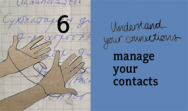


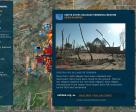
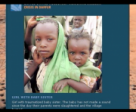
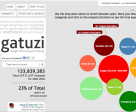
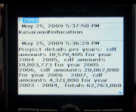
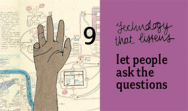

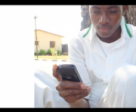
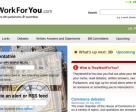
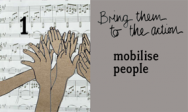
.jpg%3Fitok=FVOln0ND)
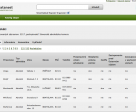
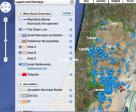
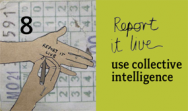

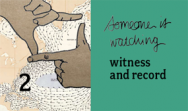





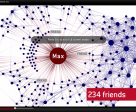
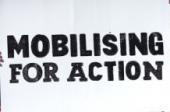

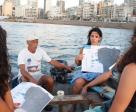
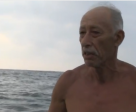



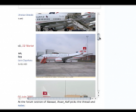
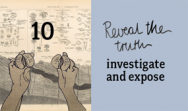
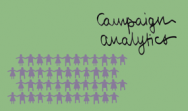

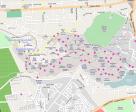
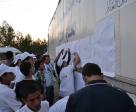


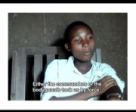
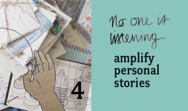

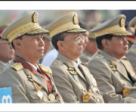



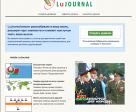

.jpg%3Fitok=i26dGBXb)
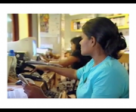
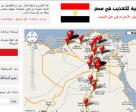


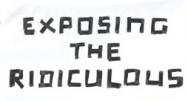
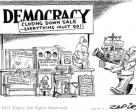






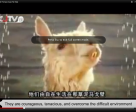
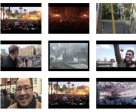
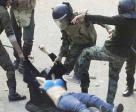




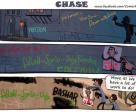
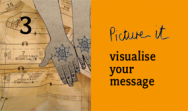
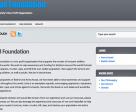

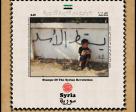
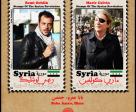
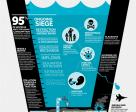



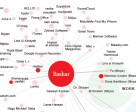
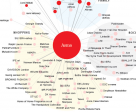
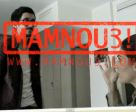


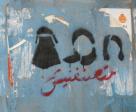



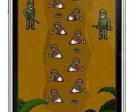
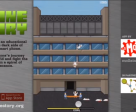


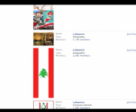
.jpg%3Fitok=eiY_LbIL)

.jpg%3Fitok=gSS9YWt3)

